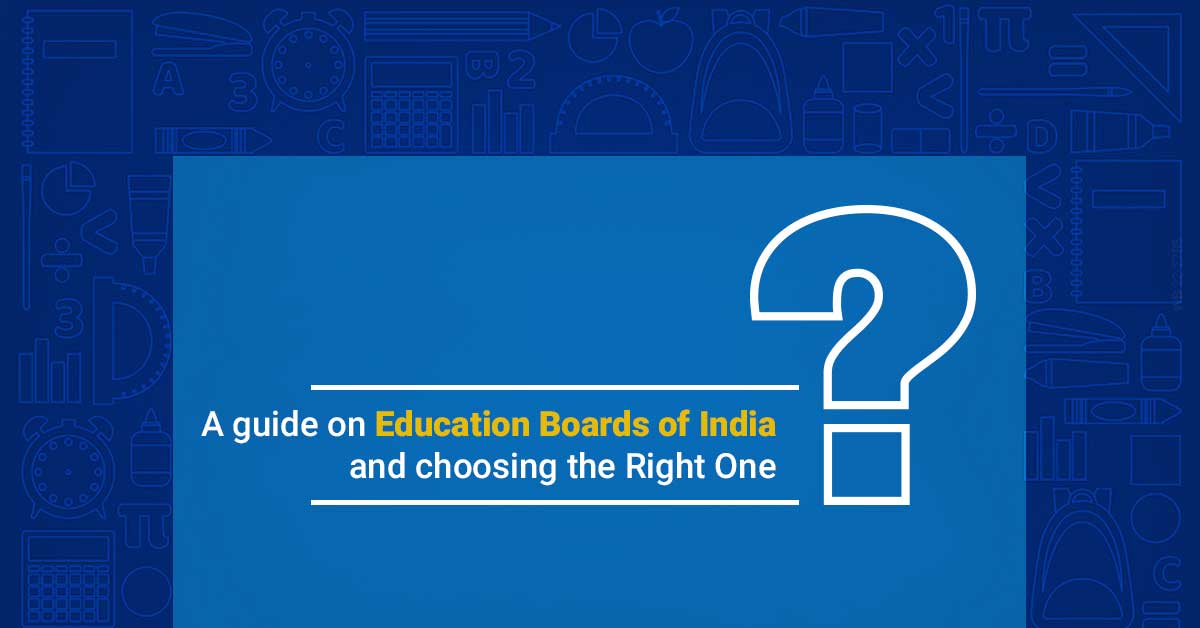India has a unique education system with a wide range of education boards at national and state levels. In the following part of the blog, we have listed the primary education boards prevalent in India, choose the best fit curriculum for your kid to ensure a successful feature for him or her.
Top educational boards in India
In the following part of this blog, we will try to provide you with a brief insight about the above-mentioned ones and which one should you should choose for your kid.
Features of State boards
- State Boards generally have a regionally-based program and a syllabus.
- They generally include state languages as components and a medium of instruction.
- State Boards can conduct primary and mid-level examinations. Many boards now keep only secondary examinations.
Features of Central Board of Secondary Education (CBSE)
- The curriculum is rote-based
- Is usually considered tougher than the State Boards
- Elementary students (grades 1–5) are taught language and social skills
- Students enrolled in secondary school (grades 6–10) study science, math, social science, literature, a second language, and IT.
- The pedagogy additionally includes music, dance, and other art forms.
- Two national-level board exams are conducted by CBSE, AISSE (All India Secondary School Examination) for class 10th, and AISSCE (All India Senior School Certificate Examination) for 12th standard students.
- Currently, CBSE is conducting Continuous Comprehensive Testing (CCE) from Grades 6 to 10. This involves testing students throughout the year rather than at the end of the year.
Features of Indian Certificate of Secondary Education (ICSE)
- ICSE Board focuses on the overall development of a student.
- The ICSE curriculum provides equal emphasis to all subjects and also provides flexibility in the selection of particular subjects.
- ICSE also gives equal weighting to languages, arts, and humanities.
- The mode of instruction is English.
Features of Council for the Indian School Certificate Examination (CISCE)
- CISCE Board places more importance on task-based learning rather than text-based learning.
- CISCE is more language and arts-based in comparison to CBSE.
- CISCE offers fewer subjects than CBSE.
Features of National Institute of Open Schooling (NIOS)
- For Grade 10, topics are selected from two basic classes of at least five subjects and one language.
- Open Basic Education (OBE) refers to four years of primary education, which is equivalent to classes 3 to 8.
- For Grade 10, topics are selected from two basic classes of at least five subjects and one language.
- The NOIS Board also conducts vocational training (commerce).
- Students may finish their exams in five years if they wish.
- Open Basic Education (OBE) refers to four years of primary education, which is equivalent to classes 3 to 8.
Features of State Boards International Baccalaureate (IB)
- Mathematics, physics, languages, and natural sciences are included in PYP (ages 11-years-old)
- Students in the MYP (ages 11–16) learn eight subjects: languages, math, physics, and art as well as architecture. Students in each cohort must receive a minimum of 50 hours of instruction.
- IBDP has three key components:
- Theory of Knowledge, which explores the nature of knowledge
- C A S – Creativity, Activity, and Service
- The Extended Essay, which requires an Independent research work
Features of Cambridge International Examinations (CIE)
- The use of instructional methods of CIE can help children to learn and develop in a specific way.
- CIE curriculum motivates students to express their creativity and understand outside the classroom, one of its major benefits.
- Primary and secondary students can take Cambridge exams through the Main Stage. The most important exams are IGCSE, AS and A level, which students can take at Cambridge.

